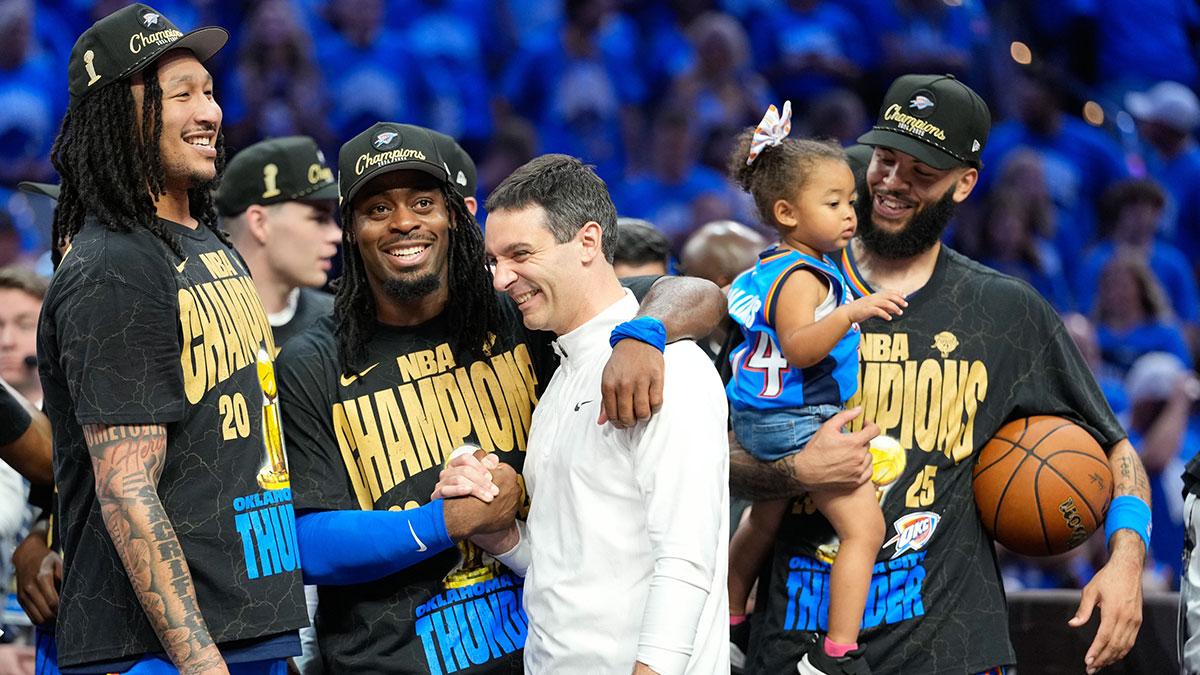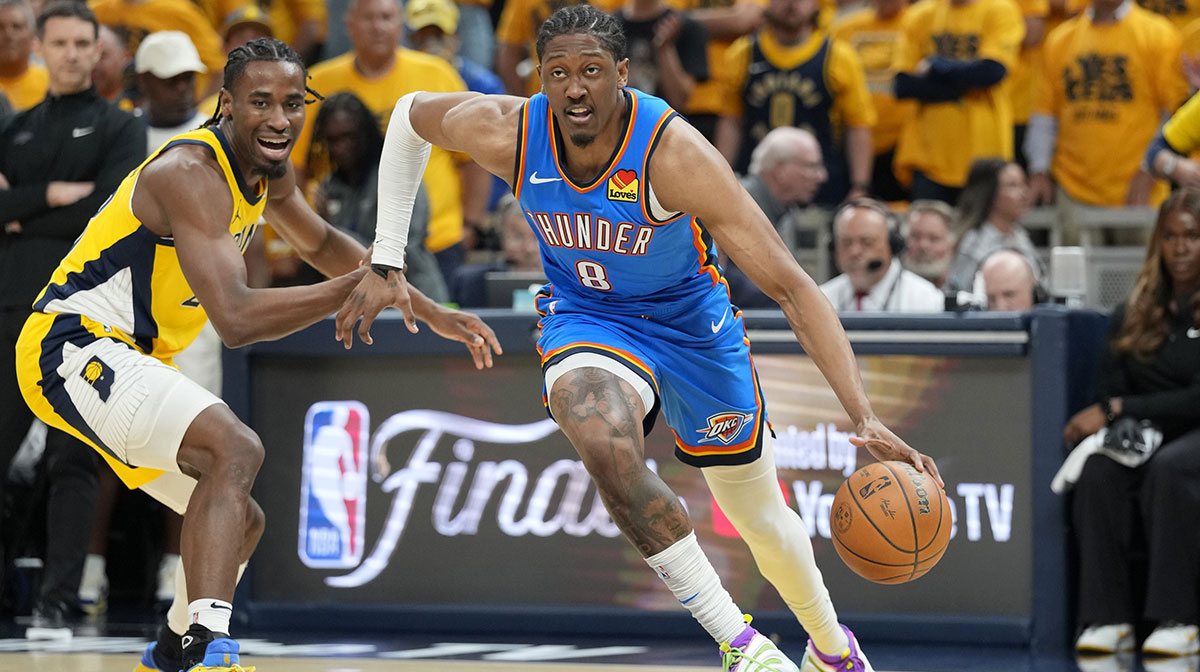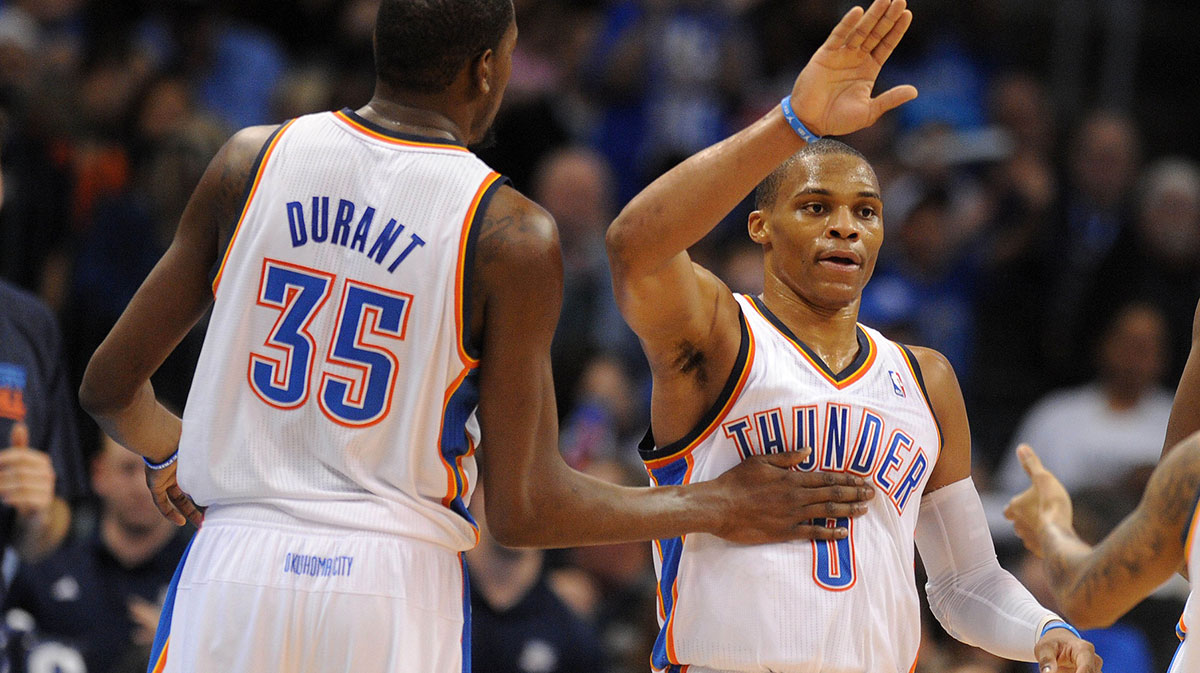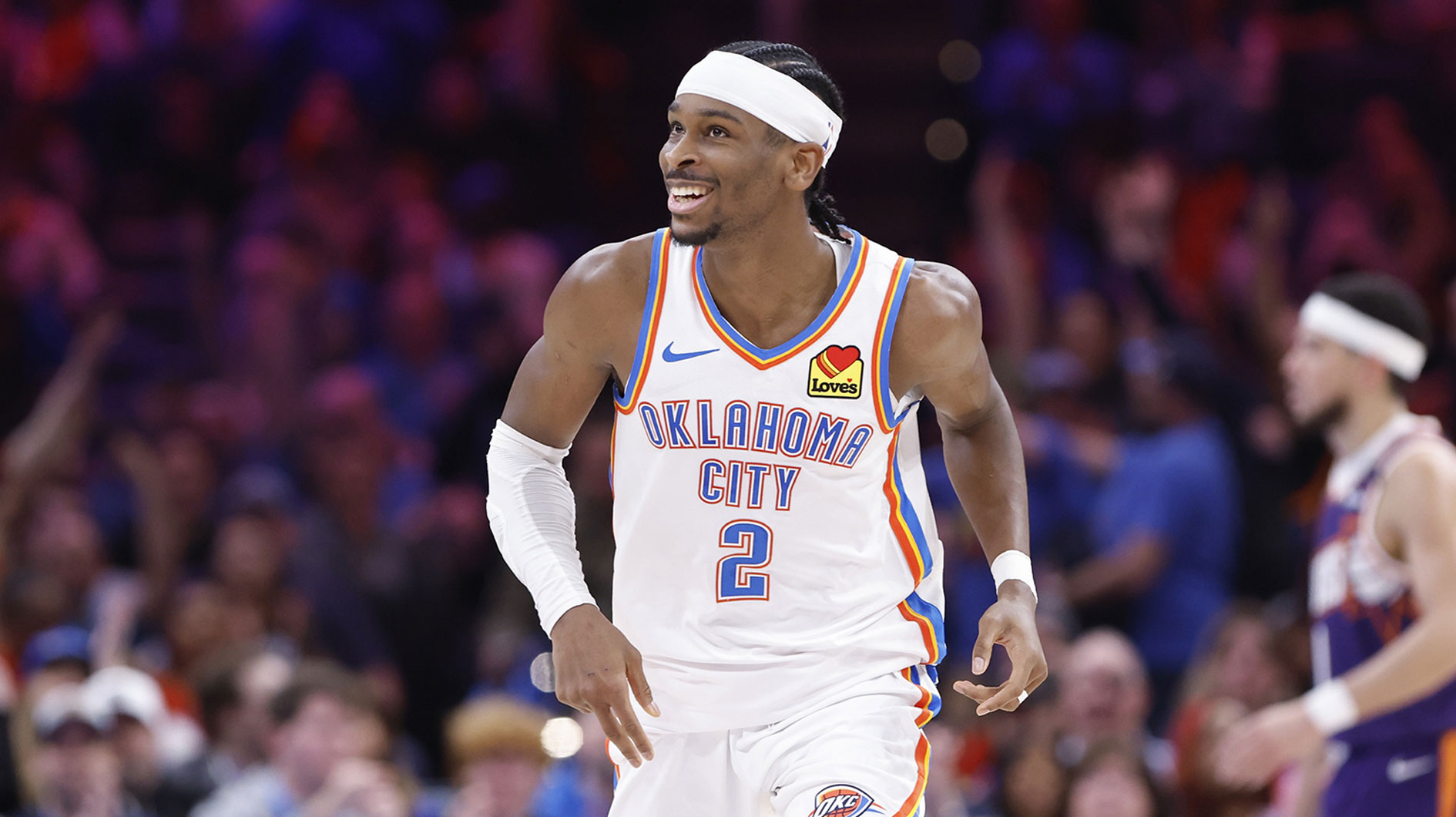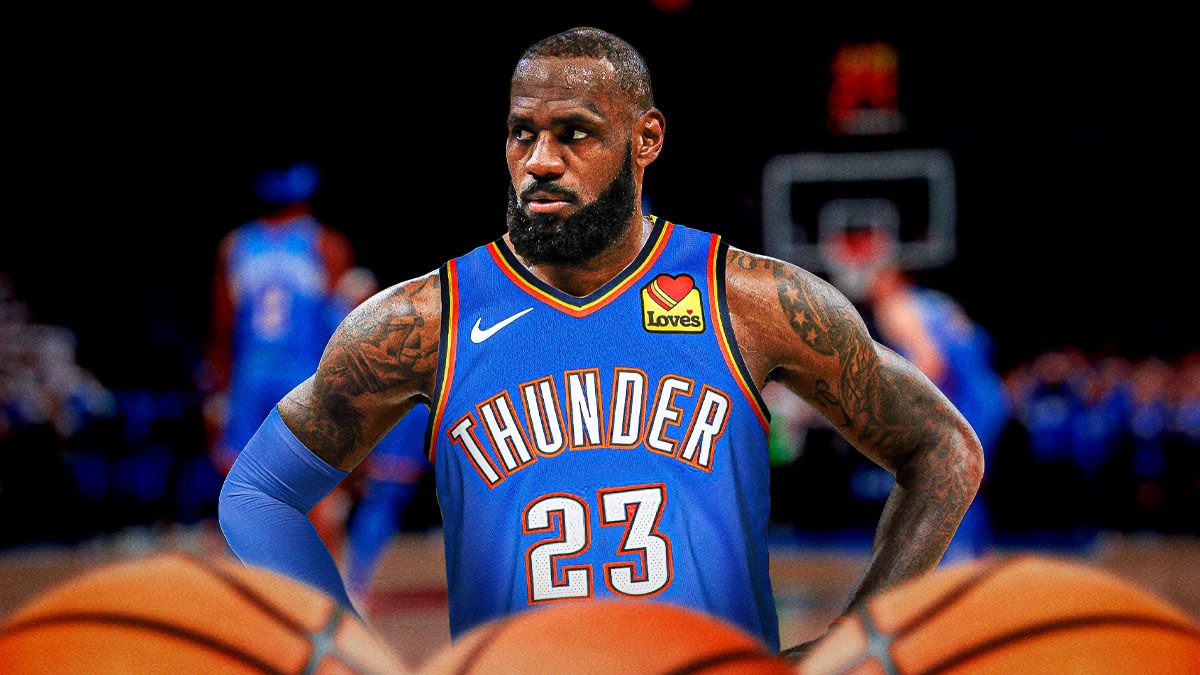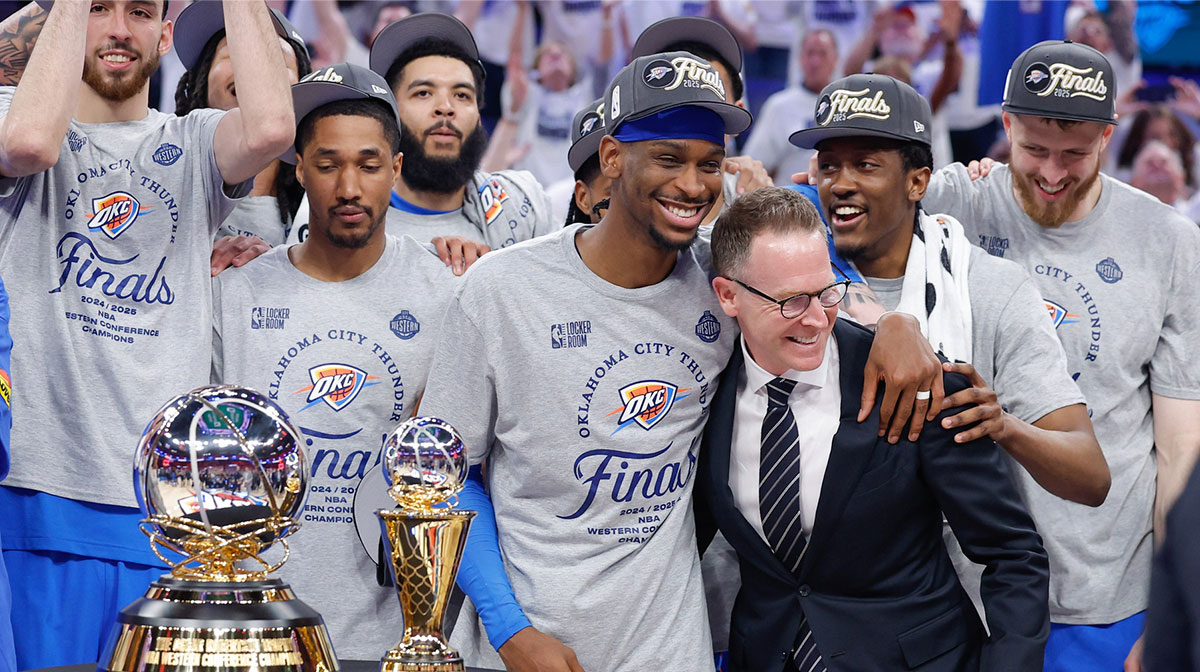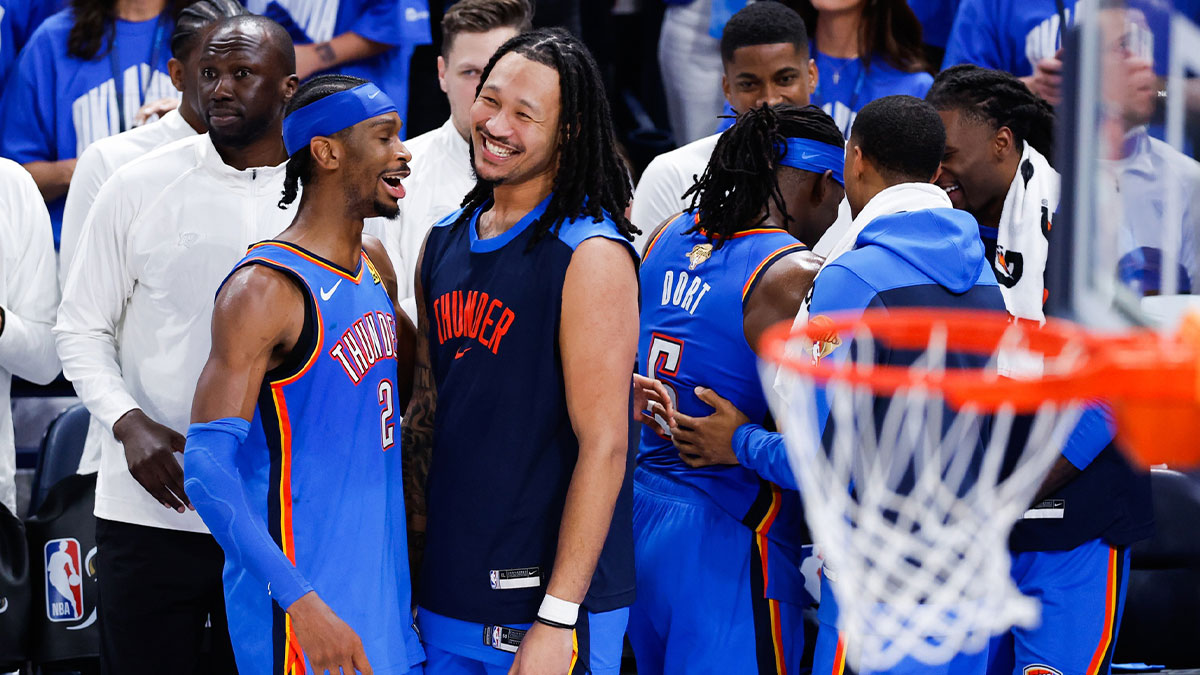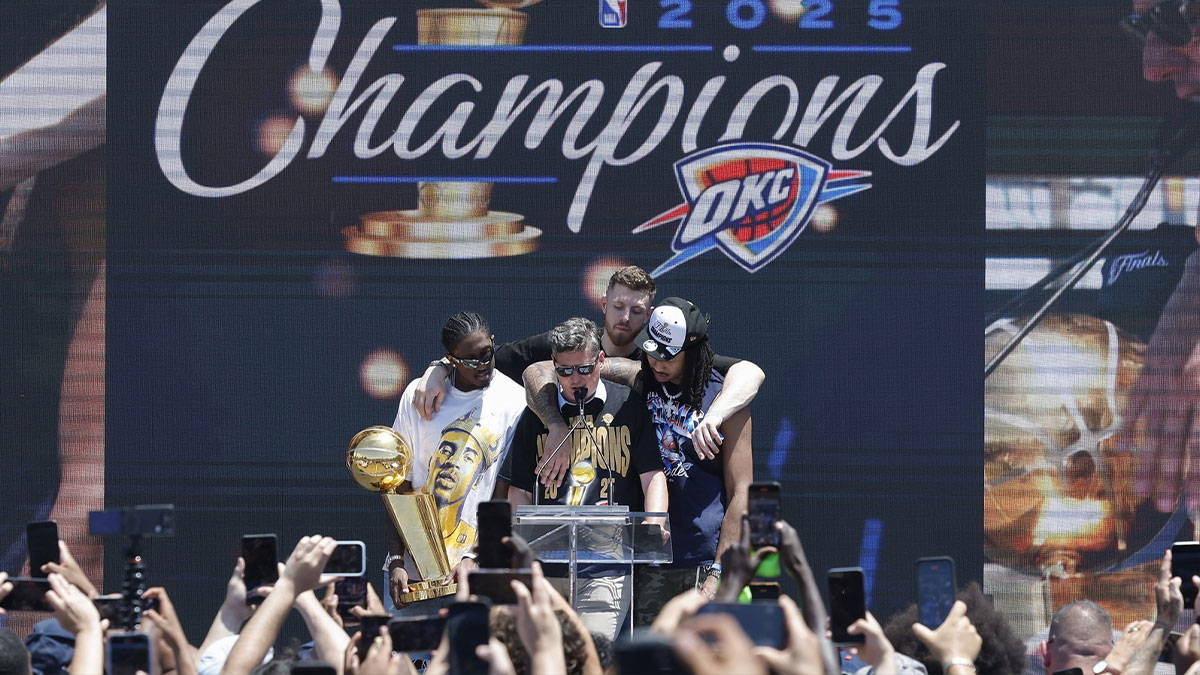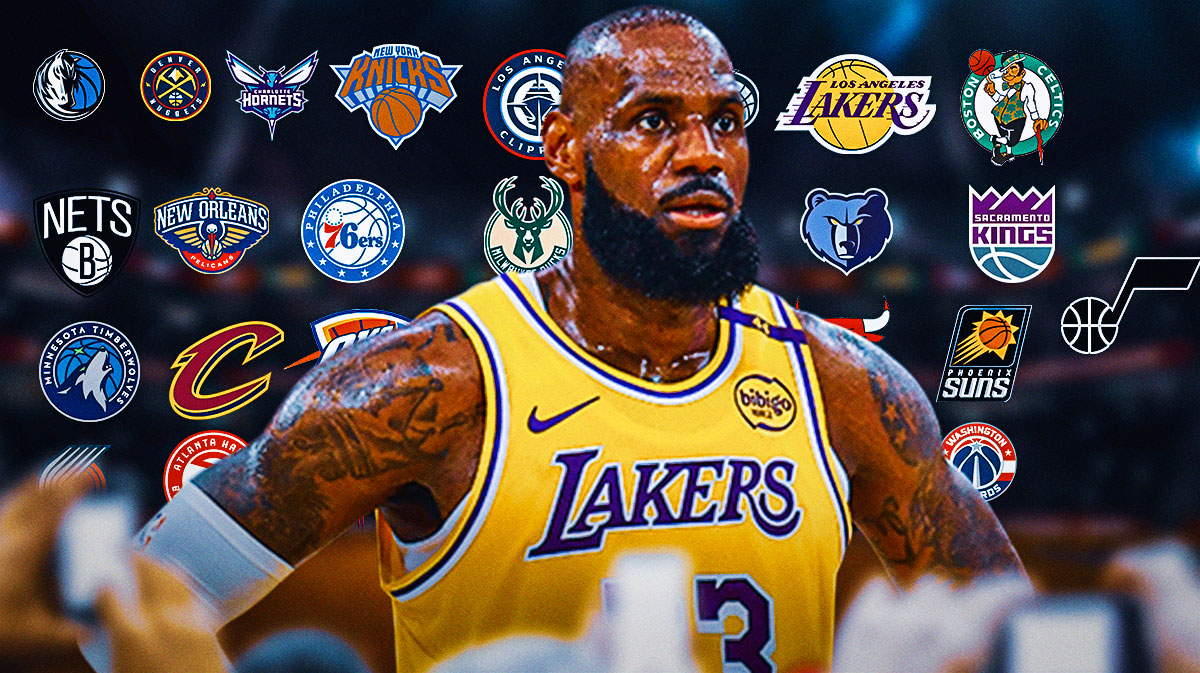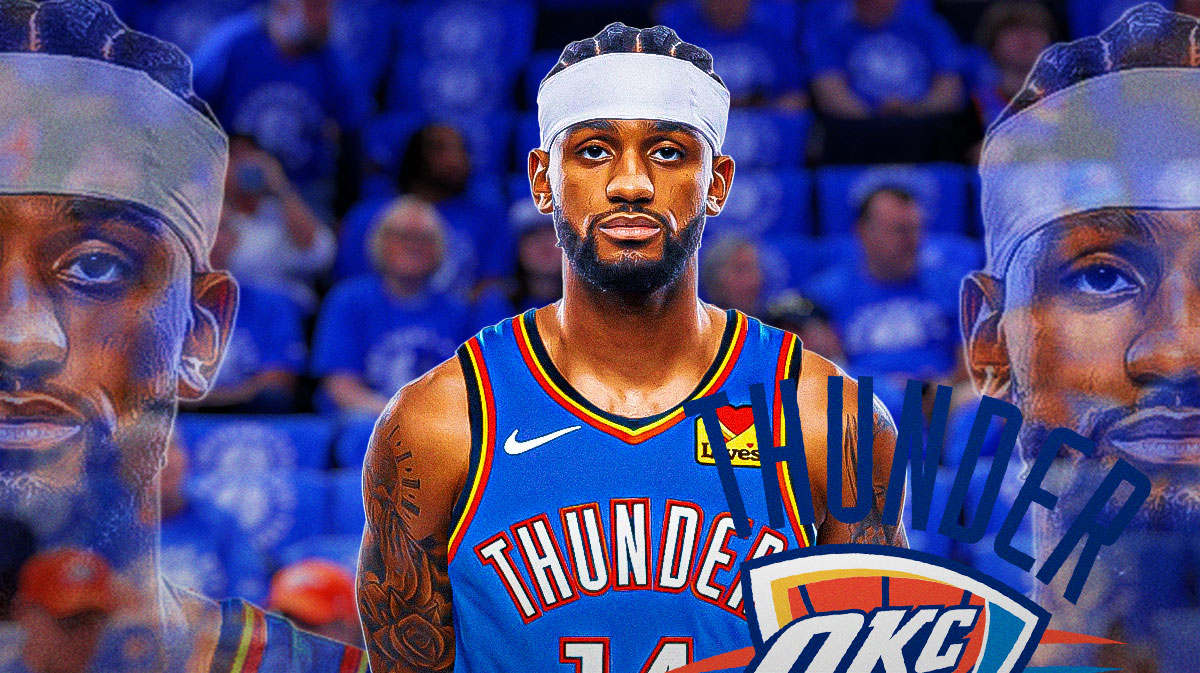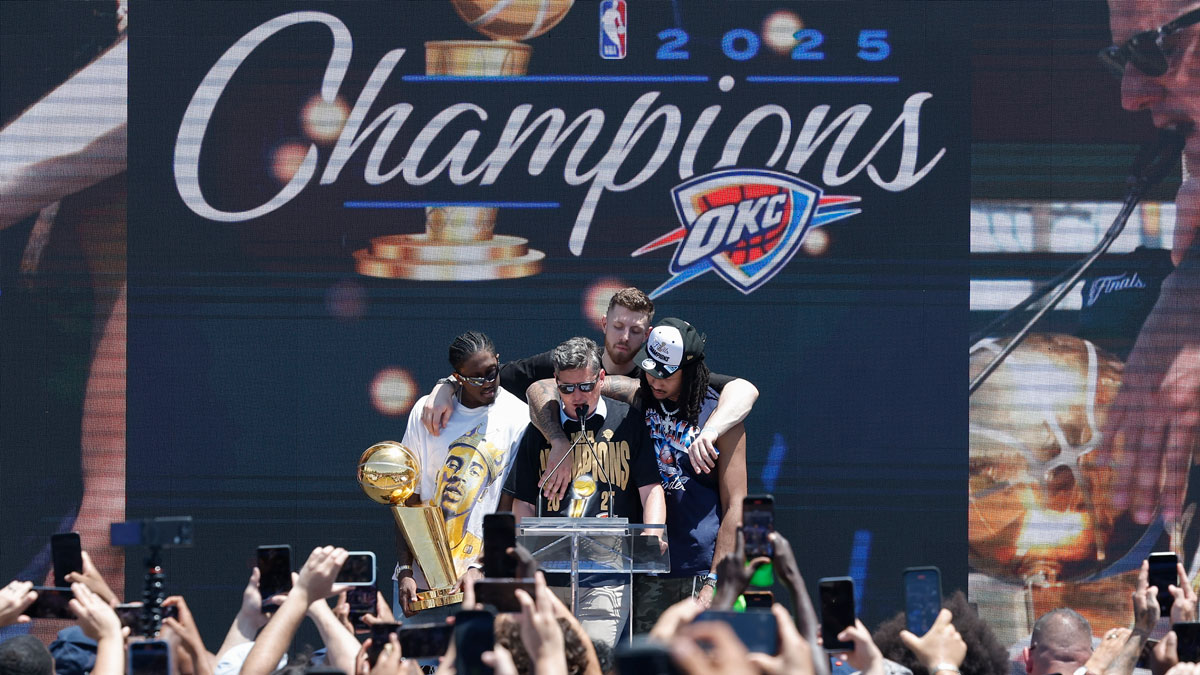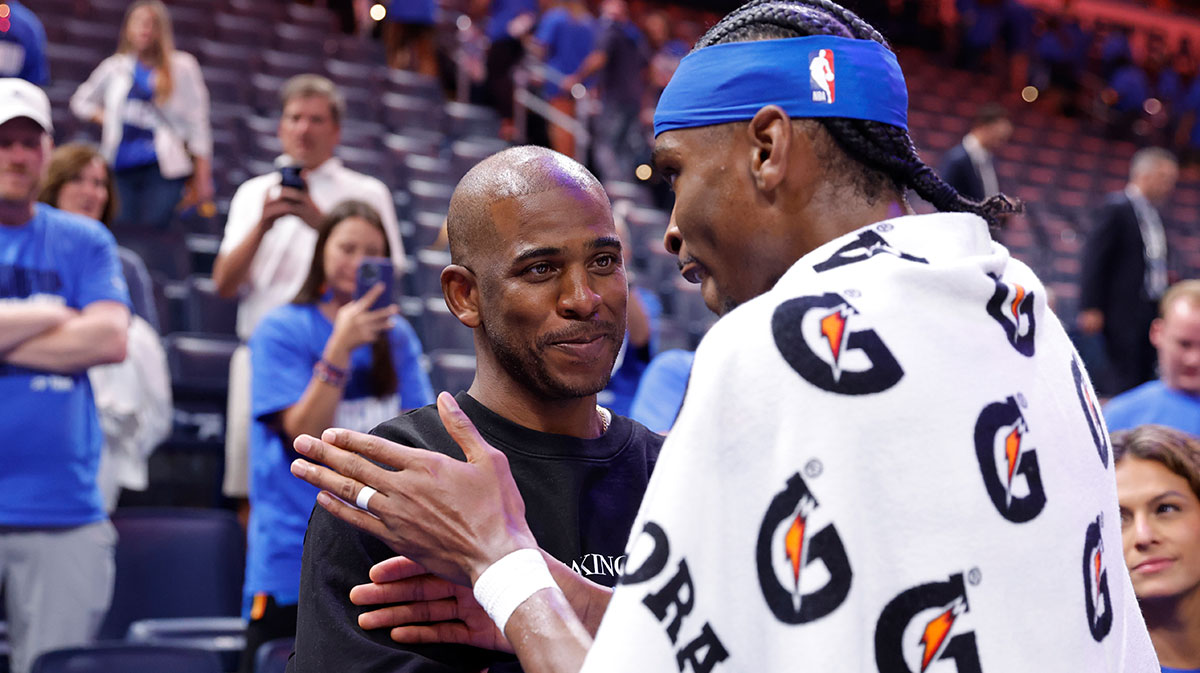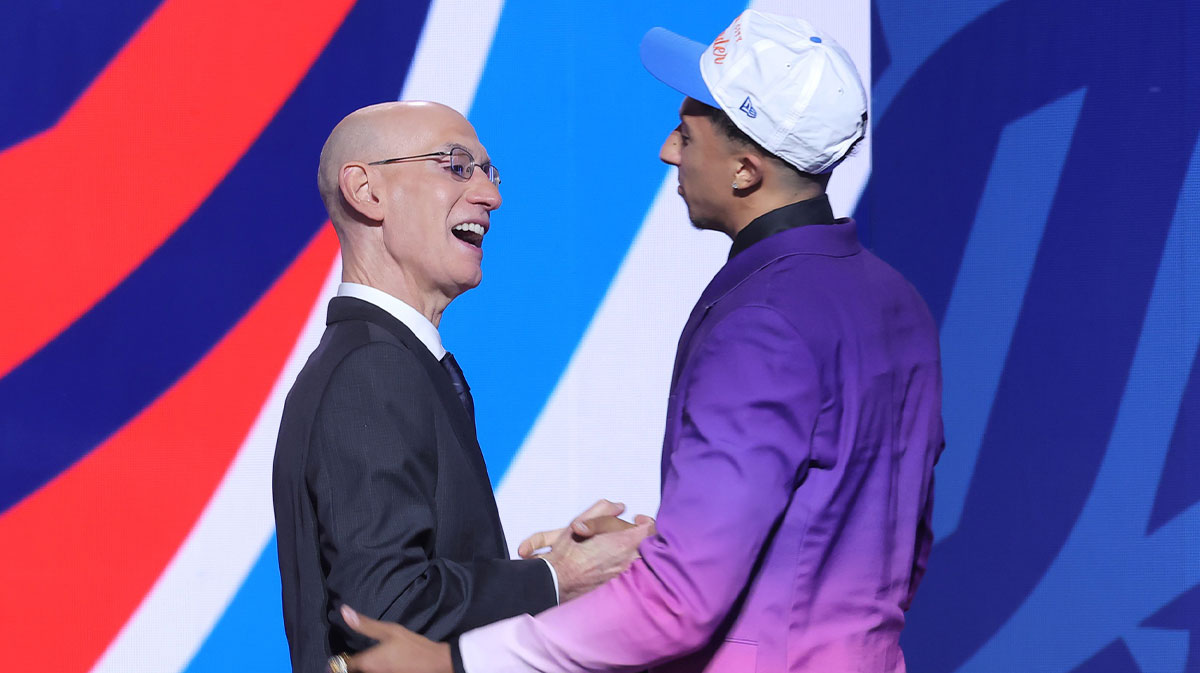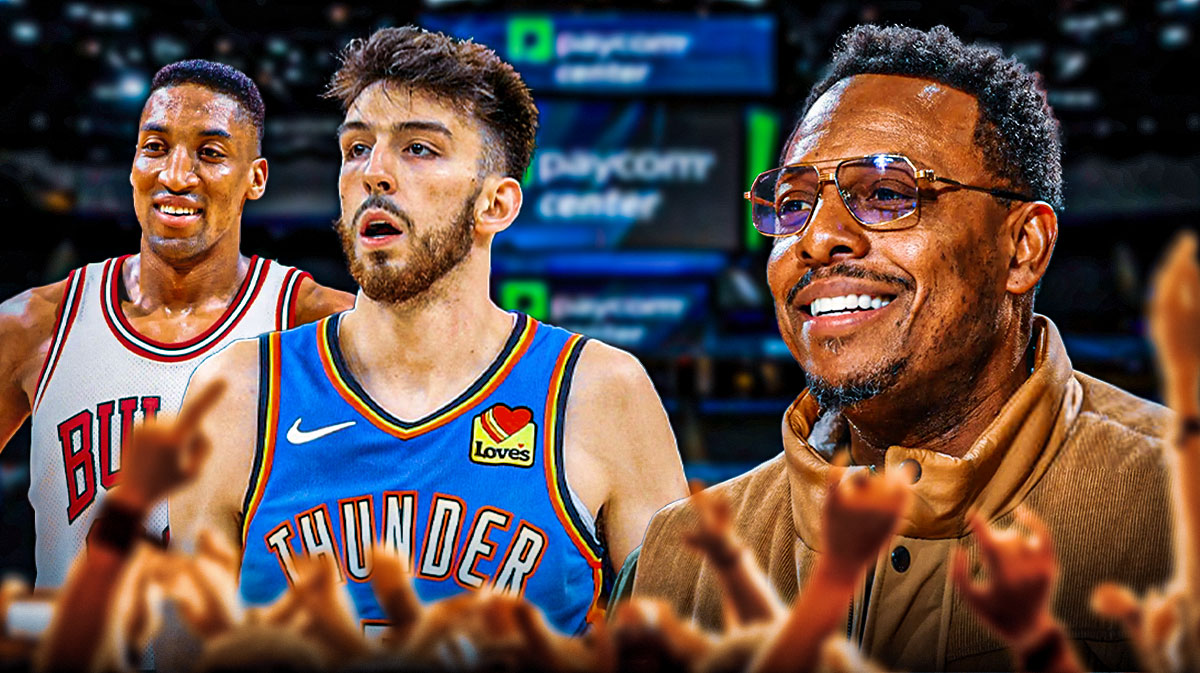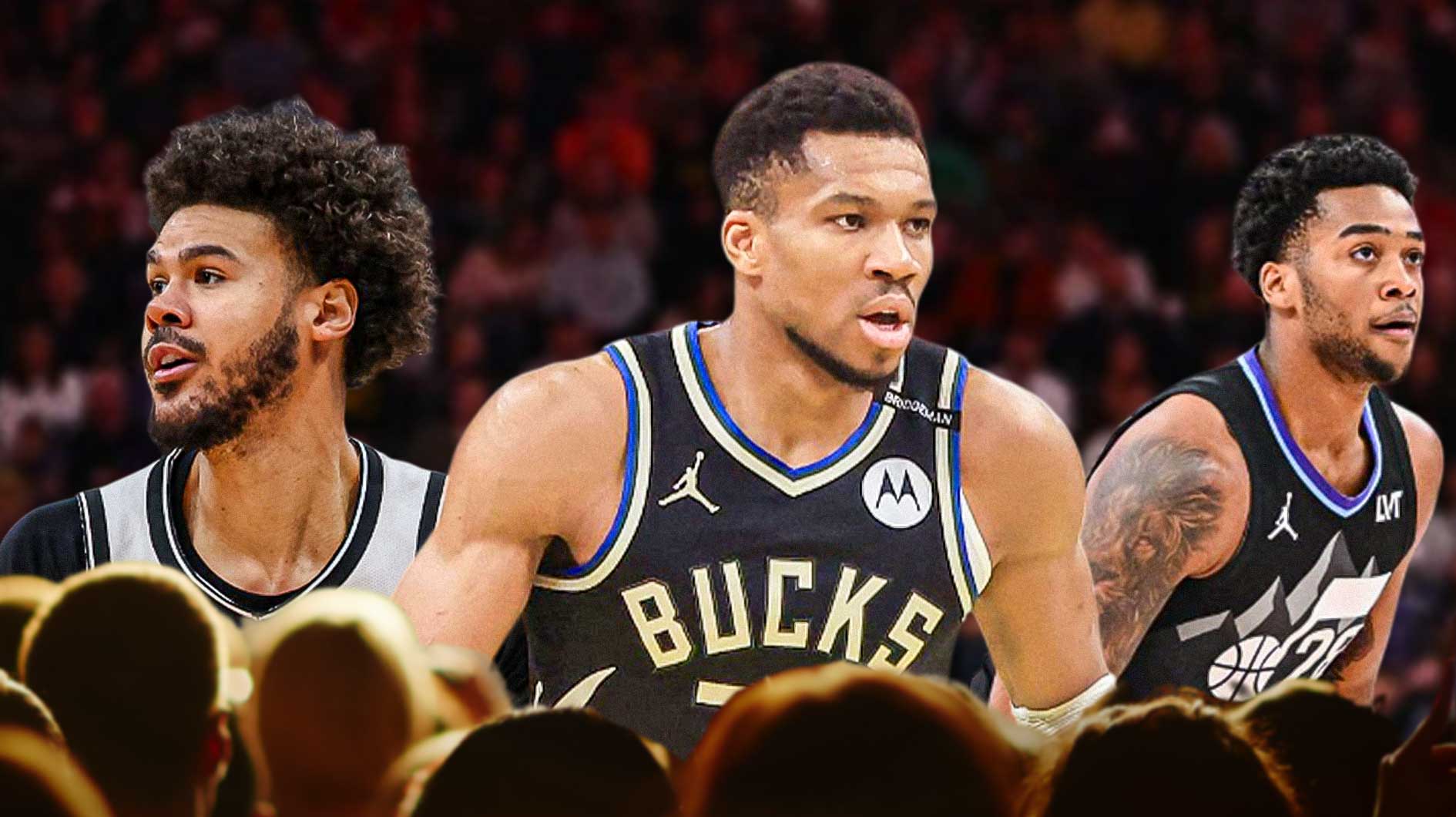Steven Adams is averaging 8.8 rebounds per game, good for 18th in the league. That number doesn't come close to representing his skill and position as one of the game's best rebounders. Adams is one of the league's best at sealing defenders with his body and securing rebounding position. He excels at using his strength to keep rebounders at bay and puts his body on the line night in and night out to hustle and fight for rebounds.
Box Out Menace
Adams plays on a team with several great rebounders in other positions. Russell Westbrook the best rebounding guard in the league, is averaging 9.9 rebounds this year. Next to him is Andre Roberson, a 6'7 shooting guard who averages 4.8 per game. Paul George and Carmelo Anthony at the forward spots grab 5.4 and 5.9 rebounds each. With so many strong rebounders on the team, Steven Adams is used less for crashing the defensive glass and more as a means to secure position and box out the other team's primary rebounding threat. This is corroborated by his low 48% rebound chance percentage. (The NBA considers a missed shot within 3.5 feet of a player's vicinity to be a rebound chance.)
Most starting bigs will have upwards of 15 rebound chances per game with elite board-crashers grabbing upwards of 60% of their total rebound chances. Adams only grabs about half of the rebound chances he gets every game, indicative of his box out focused style of defensive rebounding.
Watch Steven Adams box out (and lock arms) with Deandre Jordan to keep him out of rebounding position. Despite being next to the ball and close enough to reach for the rebound, Adams focuses on staying in front of Deandre Jordan instead allowing PG to soar in to secure the board.
Adams' defensive rebounding style is a strategy meant to accomplish two things, neutralize the opponent's primary rebounding threat and leave the rebound to a faster teammate. This is the same approach to rebounding that big men like Roy Hibbert and Brook Lopez employ; use your body to box out and deny position from opposing big men to keep them off the glass. In that clip above, Adams is matched up with DeAndre Jordan, the league leader in rebounds. By boxing him out, Adams takes himself and DJ out of the play, neutralizing a dangerous rebounding threat and leaving it to his teammates to crash the board. To that point, the rebound is typically collected by one of the league's most explosive transition players.
When Russ crashes the board, his first thought is to attack. Westbrook explodes down the court after rebounds to attack the basket, hit an open man or pull out of the drive to set up the offense. By deferring defensive rebounds to Russ and the other players, Adams eliminates an unnecessary outlet pass and allows the faster players to push the pace and attack in transition.

Crashing Boards
While Steven Adams is deferential on the defensive glass, he is a completely different animal on the offensive glass. Despite only averaging 8.8 boards, Adams leads the league with 5.0 offensive rebounds per game. His persistent and aggressive offensive rebounding effort strikes fear in opponents and creates numerous second chance opportunities a game. Offensive rebounding is a multi-faceted skill that few in the league are proficient at. It's a combination of timing, strength, but above all, instinct. Few players are adept at securing offensive rebounding position against defenders and being in the right place to corral missed shots. Fewer still put in the consistent effort required to succeed on that end of the floor. Steven Adams is one of a select few to have both the physical tools and hustle to dominate the offensive glass.
Steven Adams punishes teams for lazy rebounding effort. In the play above, Adams sees Brook Lopez out of position after closing out on Melo's jumper and rushes in to take advantage. None of the Lakers players except for Tyler Ennis attempts to box out, leaving Adams wide open for the putback slam. This type of rebounding effort is common in the NBA, especially among younger players, where players get caught ball-watching and waiting for the rebound. Adams frequently exploits these opportunities to crash the offensive glass for easy boards and putback opportunities. Below is another example. While DJ and Adams fight for position, the Big Kiwi catches Blake watching the shot and gets the uncontested tip-in for two easy points. These are the plays where Blake shows his laziness on defense. Blake doesn't close out on Melo and makes no attempt to secure the rebound, allowing a wide open three and giving up the offensive putback.
Of course, just because defenders have rebounding position doesn't mean Steven Adams is easy to stop. Adams is a physical player that excels at using his strength and size to attack the glass. At 57.7%, he's second in the league in contested rebounding percentage, regularly fighting opposing rebounders to secure the board. Watch these next two plays for examples of Adams' strength. In the first clip, Randle makes the mistake of going for the rebound instead of boxing Adams out. The two get to the ball at the same time but Adams completely outmuscles Randle to snatch the board. In the second clip, Adams is quick to position himself in front of an unaware John Henson who is focused on the developing play. He then uses his strength and positioning advantage to box out Henson (who notoriously struggles against bigger players) and get the easy rebound.
Positioning Battles
While Adams is typically reliant on his big 7 foot frame and long arms to clear space against defenders, he's also excellent at positioning and can transition quickly between smooth and physical play depending on the matchup. In truth, perhaps Adams' best offensive rebounding skill is his ability to get by defenders. Adams is great at reading opposing bigs reacting to play and has a variety of moves in his toolbox that he uses to get around defenders and secure rebound positioning. Watch this little spin move he uses to maneuver past Clint Capela for the easy tip-in.
Clint Capela isn't out of position in the play. Capela is focusing on the ball swinging across the perimeter and Adams' move catches him off-guard, resulting in an easy put-back. Whether his opponent is longer or quicker, Adams always finds himself at the right place at the right time.
These are the plays that show how dangerous Steven Adams can be on the offensive glass. He is incredible at taking advantage of play developments and needs only a small distraction to sneak by defenders and secure rebounding position. With such dangerous offensive weapons on his team, the defensive attention is often rightfully focused on Adams' teammates. After all, guarding against a Westbrook drive is a team effort. However, a split second distraction is all the opportunity Adams needs to slip into the right spot for the rebound.
There are a lot of things happening in this play above. At the start of the clip, Dallas' #42, Maximilian Kleber, takes one quick look at Adams before rotating over to help on the Westbrook drive. Adams shades down to the baseline to pull Kleber towards the restricted area away from the driving lane and gets in position in case Russ dumps the ball off to him.
Kleber and Dirk's help defense forces Russ to break off the drive and pass the ball out. With Dirk cutting off the passing lane to Adams, Russ opts to pass to Josh Huestis for the corner three. As soon as the pass goes to the corner, Adams moves to the opposite side of the rim behind Dennis Smith Jr. The shot goes up and Kleber turns to find his man but Adams has already positioned himself behind DSJ to create separation from Kleber. With DSJ between them, Kleber isn't able to get into a good position to contest the rebound, leaving Adams open for the easy rebound and putback. This play demonstrates Steven Adams' excellent understanding of off-ball positioning and shows why he's one of the best offensive rebounders in the league. His consistency with these attributes make him an effective, old-school center in today's NBA.
It's hard not to admire the way Steven Adams relentlessly attacks the glass night in and night out. As the league leader in offensive rebounds, Adams' physical play and smart positioning is buoyed by his boundless grit and hustle. Countless OKC possessions are kept alive purely out of Adams' unwillingness to give up on a play. His place as one of the league's top rebounders is well earned.

